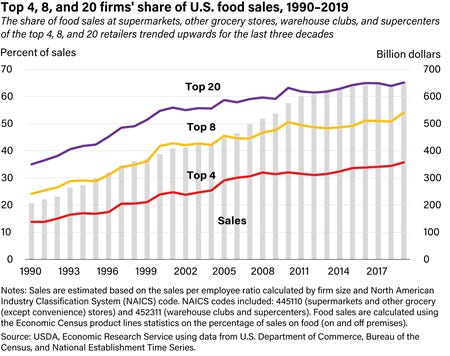Why the White House is soft on Walmart: afterthoughts
Not everyone liked Sam Kass’s speech as much as I did (see previous post) and I’ve been asked to expand on the idea that we need to pressure the White House to do more. Here’s how I see the situation.
We live in an era when corporations run government. You don’t believe this? Take a look at the appalling events in Wisconsin. Consider the implications of last year’s Supreme Court decision in Citizens United, allowing corporations virtually unlimited funding of congressional election campaigns.
Election campaign funding is the root source of corruption in American government. If corporations were not allowed to fund election campaigns, we might be able to elect legislators who are more interested in public health than corporate health.
The First Lady’s Let’s Move campaign aims to reduce childhood obesity. This, in itself, is fundamentally anti-corporate. Why? Because fixing obesity means eating less and eating better, and both are very, very bad for business. And they are especially bad for the corporations that make highly profitable junk foods—snacks, sodas, and the like—and for retailers who display these products on supermarket shelves.
From the perspective of the White House, the food business is not going away. If the Obama administration is not going to be perceived as anti-business, it has to work with corporations. But what can food corporations really do to help kids eat more healthfully?
I worried about this question when I returned from the World Economic Forum in Davos a few years ago. There, I met high-level executives of food corporations and realized that I needed a clear, unambiguous agenda for them. But because I think people would be healthier if they ate mostly unprocessed foods, and I’m not much impressed by small nutritional tweakings of junk foods, I had a hard time thinking of positive things they could do.
The only agenda items I could think of were negatives: stop marketing junk food, stop marketing to kids, stop marketing junk food as health food, stop attacking critics, etc. Negatives won’t sell.
I think Mrs. Obama’s choice of childhood obesity as her First Lady’s Cause was a courageous decision. In the current corporate context, the accomplishments listed by Mr. Kass add up to something meaningful. The First Lady is doing what she can. And let’s face it: nobody else in that position ever has. Never have issues of food and nutrition been made so legitimate. For that alone, she deserves thanks.
If the Obamas think they have to work with business, they have to work with Walmart—it’s the 800-pound food gorilla. In theory, if Walmart tweaks food products, reduces the price of healthier food options, sources lower cost fruits and vegetables, and moves stores into inner cities, the net result will be healthier choices for Walmart customers. In practice, we have to wait and see.
The White House must think these potential gains are worth the cost of the nose-holding they have to do about Walmart’s labor and business practices. Nose-holding is the price of getting things done at that level.
I am in the privileged position of not having to make those kinds of compromises (thank you, NYU).
It is not an accident that Mr. Kass’s riff began with “parents told us.” The First Lady cannot budge without substantial popular support and pressure. If we think she is in a position to do any good at all for the movement to reverse childhood obesity and improve the food system, we have to let her know what we’d like her to try to do—loudly and repeatedly.
So maybe the First Lady’s—and Sam Kass’s—next speech will begin: “Everyone who cares about how our food is produced and consumed told us….”
Maybe I’m overly optimistic (it’s my nature), but I still see Mrs. Obama’s efforts as an opportunity. We ought to be using it to push for what we think is right.







